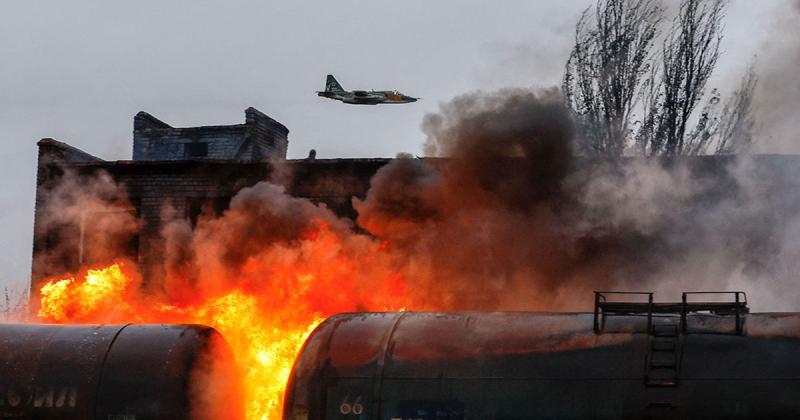A report published by the Royal United Services Institute (RUSI) for Defence and Security Studies highlights the need to continue use of Ukrainian surface-to-air missile (SAM) systems to counter Russian loitering munitions and airborne attacks. The Russian Air War and Ukrainian Requirements for Air Defence takes a detailed look at air-defence capabilities.
Summary:
- Russian Aerospace Forces (VKS) conducted significantly more extensive fixed-wing strike operations during the first days of the invasion than has been previously documented, while Ukrainian ground-based air-defence (GBAD) capabilities were suppressed by initial attacks.
- During this period, Ukrainian fighter aircraft inflicted some losses on VKS aircraft but also took serious casualties due to being totally technologically outmatched and badly outnumbered.
- Russian fighters have remained highly effective and lethal against Ukrainian aircraft near the frontlines throughout the war, especially the Su-35S with the R-77-1 long-range missile and, in recent months, the Mig-31BM with the R-37 very long-range missile.
- From early March, the VKS lost the ability to operate in Ukrainian-controlled airspace except at very low altitudes due to its inability to reliably suppress or destroy increasingly effective, well-dispersed and mobile Ukrainian surface-to-air missile (SAM) systems.
- Russian GBAD has also been highly effective since March, especially the long-range S-400 SAM system supported by the 48Ya6 ‘Podlet-K1’ all-altitude long-range surveillance radar system.
- Numerous man-portable air-defence systems (MANPADS) provided to Ukrainian troops and later mobile air-defence teams meant that low-altitude Russian fixed-wing and rotary penetrating sorties beyond the frontlines proved to be prohibitively costly during March, and ceased by April 2022.
- Throughout the war, most Russian airstrikes have been against pre-designated targets with unguided bombs and rockets. The Su-34 fleet has regularly also fired standoff missiles such as the Kh-29 and Kh-59 against fixed targets, and Su-30SM and Su-35S fighters have regularly fired Kh-31P and Kh-58 anti-radiation missiles to suppress and target Ukrainian SAM radars.
- Without air superiority, Russia’s attempts at strategic air attack have been limited to expensive cruise and ballistic missile barrages at a much more limited scale. These failed to achieve strategically decisive damage during the first seven months of the invasion. However, the latest iteration is a more focused and sustainable bombardment of the Ukrainian electricity grid, blending hundreds of cheap Iranian-supplied Shahed-136 loitering munitions against substations with continued use of cruise and ballistic missiles against larger targets.
- The West must avoid complacency about the need to urgently bolster Ukrainian air defence capacity. It is purely thanks to its failure to destroy Ukraine’s mobile SAM systems that Russia remains unable to effectively employ the potentially heavy and efficient aerial firepower of its fixed-wing bomber and multi-role fighter fleets to bombard Ukrainian strategic targets and frontline positions from medium altitude, as it did in Syria.
Link to the report here
For more information:




